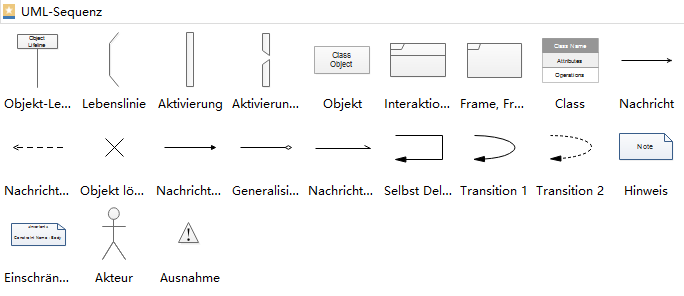

#Uml sequence diagram symbols software#
It constitutes class names, attributes, and functions in a separate compartment that helps in software development. It shows the attributes, classes, functions, and relationships to give an overview of the software system. A class diagram is used to visualize, describe, document various different aspects of the system, and also construct executable software code. A class consists of its objects, and also it may inherit from other classes.

It represents the types of objects residing in the system and the relationships between them. As a curiosity, I used to highlight the Visual Studio UML Reference, which was rather complete but after the UML designer was removed from later versions of Visual Studio, they ended up removing it.Īnd if you want to learn more than simple notation details and go deeper in your understanding of your UML language, our selection of UML books may be helpful as well (and you can also play with some UML tools I recommend).The class diagram depicts a static view of an application. Some are quite old, but I still like them and the main elements of the UML notation have not changed a lot during all these years (except for the interpretation of the includes and extends relationships in use case diagrams you should be careful with this).
#Uml sequence diagram symbols code#

It covers all diagrams, some in more detail than others. UML reference sheet from the National University of Singapore.Very simple but I include it as I like the minimal “semantic” description regarding association cardinalities and the distinction between composition and aggregation.

UML Notation summary for class diagrams and sequence diagrams.It used to have also some UML self-tests but they don’t seem to be working anymore Embarcadero’s Practical UML guide: Complete coverage of all diagrams.It is updated to reflect the UML 2.5 version. It’s more a reference guide than a cheat sheet though, since each diagram has its own dedicated page. UML Diagrams: Detailed overview of all UML diagrams (including the new features of the latest UML versions).Another 1-page quick reference, great to be printed and keep close to you. Class, use case and sequence diagrams covered Example diagrams are annotated with the name of the modeling elements used in the example. If you need a quick reference guide for the UML notation, check one of the following great UML cheat sheets (in no particular order, though the last one if my preferred one):


 0 kommentar(er)
0 kommentar(er)
